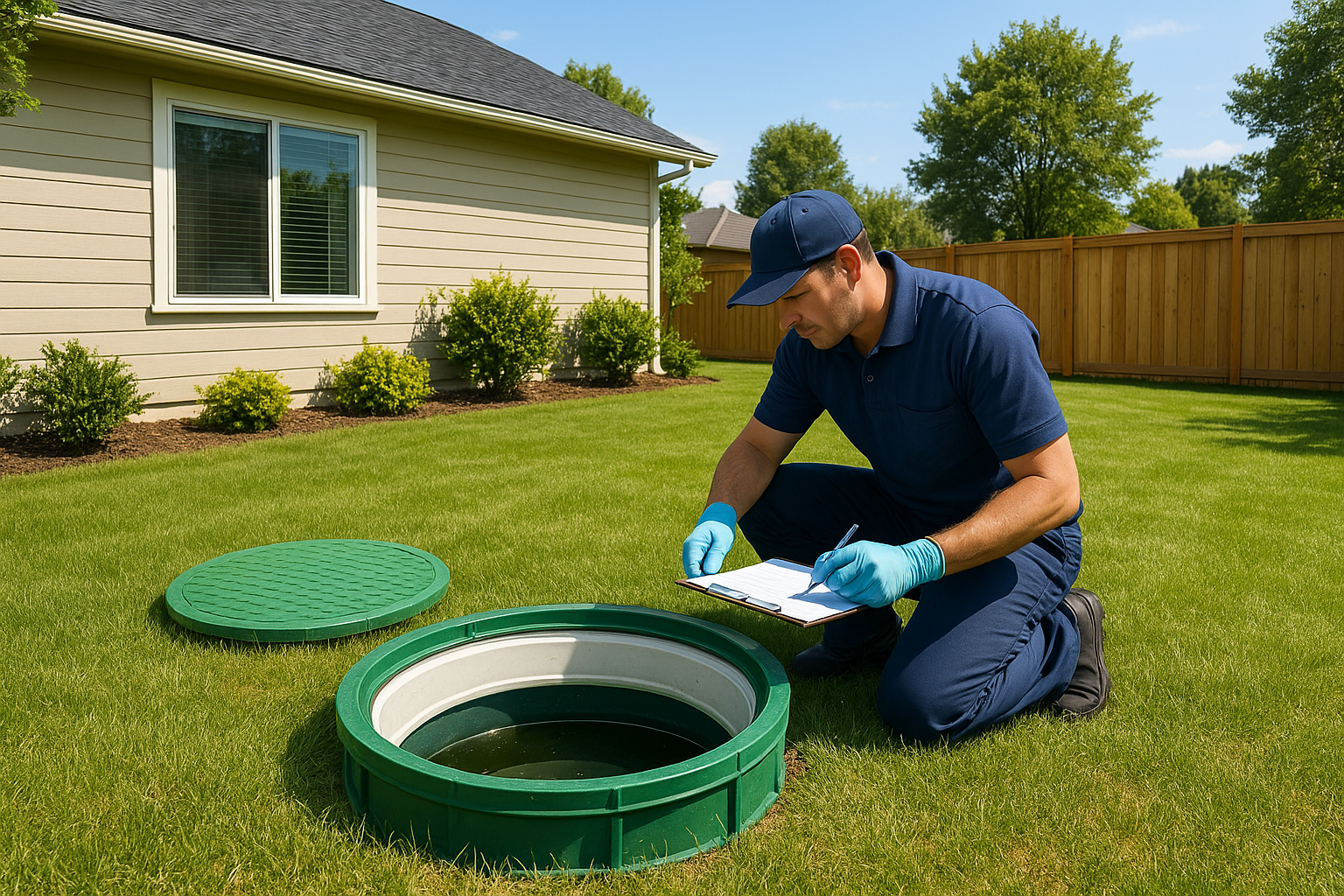A properly maintained septic system is the unsung hero of every home’s plumbing system. It handles wastewater efficiently, ensuring that harmful bacteria and waste stay far from your living spaces. However, when septic systems fail due to neglect, the consequences can be costly and hazardous to your health. Understanding septic tank maintenance essentials is crucial to preventing blockages, expensive repairs, and unpleasant odors. With a few simple but consistent maintenance practices, you can keep your septic system running smoothly for decades.
This guide will walk you through key tips every homeowner should know — from routine inspections to eco-friendly treatment options. Whether you live in a rural area or a suburban home with a private wastewater system, maintaining your septic tank is not just about convenience; it’s about protecting your investment, your environment, and your family’s well-being.
1. Understanding How a Septic System Works
Before diving into maintenance, it’s important to know what your septic system does. A septic system is essentially a private, underground wastewater treatment setup. It consists of two main parts — the septic tank and the drain field.
Here’s how it works:
- Wastewater from your home (toilets, sinks, and showers) flows into the septic tank.
- Solids settle at the bottom forming sludge, while lighter materials like oil and grease form scum on top.
- Liquid effluent flows into the drain field where it’s naturally filtered by soil and bacteria.
If you’re new to this process, reading about septic tank emptying explained can help you understand how waste is safely removed and processed. When functioning properly, this system efficiently processes waste without contaminating groundwater. Problems occur when sludge and scum build up faster than the system can process, causing backups or leaks. Understanding these basics allows homeowners to detect warning signs early — like slow drains, gurgling pipes, or foul odors — before they escalate into costly repairs or full system failures.
2. Signs Your Septic Tank Needs Maintenance
Recognizing early signs of septic tank trouble can save you thousands of dollars in repair costs. Septic systems don’t fail overnight — they give you subtle hints before major issues arise. Homeowners should regularly monitor their plumbing and yard for the following red flags:
- Slow-draining sinks, tubs, or toilets: Indicates the tank might be nearing capacity or pipes could be clogged.
- Unpleasant odors near drains or outside: Gases escaping from an overloaded or damaged tank.
- Pooling water or soggy ground above the drain field: Suggests leakage or poor absorption.
- Gurgling noises in plumbing: Air is trapped due to improper flow in the system.
- Backups or sewage odors indoors: The most serious sign — immediate maintenance is needed.
If you notice these symptoms, act quickly. Check your septic tank emptying costs in 2025 to plan your budget and avoid emergency overcharges. Addressing these issues early prevents contamination and system failure. Experts recommend scheduling a professional inspection every 1–3 years, depending on your household size and tank capacity. Remember, ignoring maintenance may lead to full system replacement, which can cost tens of thousands of dollars — far more than regular upkeep.
3. Routine Pumping and Inspections
Routine pumping is one of the most important parts of septic tank maintenance. Over time, solid waste builds up inside the tank and must be pumped out to maintain system efficiency. For most homes, pumping should be done every 3 to 5 years, but this may vary based on tank size, household water usage, and the number of occupants.
Here’s what a proper inspection and pumping routine should include:
- Professional assessment of sludge and scum levels.
- Checking for leaks and cracks in the tank and drain lines.
- Cleaning filters and removing blockages to restore flow.
- Reviewing system performance to ensure balanced wastewater flow.
Neglecting regular pumping can lead to overflow or damage. Learn how to create a septic emptying schedule for your home to stay consistent and avoid system overload. Professionals use specialized tools to measure sludge depth and recommend an appropriate schedule. Keeping accurate records of each pumping visit helps track system health over time. Homeowners who adhere to a regular maintenance plan can extend their system’s lifespan and ensure smooth, odor-free operation for years to come.
4. Eco-Friendly Septic Care Practices
Caring for your septic system goes hand in hand with protecting the environment. Eco-friendly maintenance practices ensure that your system remains healthy while minimizing harm to soil and groundwater. The products and habits you use at home directly affect how efficiently your septic tank functions.
Follow these sustainable care tips:
- Use septic-safe cleaning products: Avoid harsh chemicals like bleach and drain cleaners that kill beneficial bacteria.
- Limit water usage: Excessive water can overload the system and prevent proper waste breakdown.
- Avoid flushing non-biodegradable items: Never flush wipes, diapers, or feminine products.
- Use natural bacteria additives: They help break down solids naturally without harmful effects.
- Direct rainwater away from the drain field: Too much surface water can flood the system.
If you ever experience sudden leaks, odors, or overflows, it’s vital to know how to handle them safely. Read these septic emergency tips for quick guidance before calling professionals. Eco-conscious septic maintenance helps prevent contamination, supports a balanced microbial ecosystem, and protects nearby waterways. By adopting greener cleaning and water-use habits, you can reduce maintenance costs while contributing to a healthier environment.
5. Preventive Tips to Avoid Costly Repairs
Prevention is the most effective form of septic maintenance. Simple daily habits can dramatically reduce wear and tear, prevent system overload, and extend your tank’s lifespan. Implementing preventive measures not only keeps your system healthy but also avoids large repair expenses later on.
Here are key preventive tips every homeowner should follow:
- Spread out laundry loads: Doing all your laundry in one day floods the system with water.
- Fix leaks immediately: Dripping faucets and toilets waste water that burdens the system.
- Protect the drain field: Never park vehicles or place heavy structures on top of it.
- Plant trees away from the system: Roots can damage pipes and cause leaks.
- Schedule professional checkups regularly: Routine assessments help catch minor issues early.
When choosing a professional, explore septic tank emptying services near you to find reliable experts in your area. A proactive approach to septic care saves money and preserves your home’s sanitation system for decades. With small, consistent steps and awareness, homeowners can avoid the stress of septic emergencies and enjoy peace of mind knowing their wastewater system runs safely and efficiently.
Final Thoughts
Septic tank maintenance isn’t complicated—it’s about consistency and care. A well-maintained septic system safeguards your property, promotes environmental health, and helps you avoid unexpected expenses. Regular inspections, mindful usage, and eco-friendly habits form the foundation of a reliable and long-lasting system. By following these essentials, you not only maintain functionality but also protect your home’s value and hygiene for years to come.






